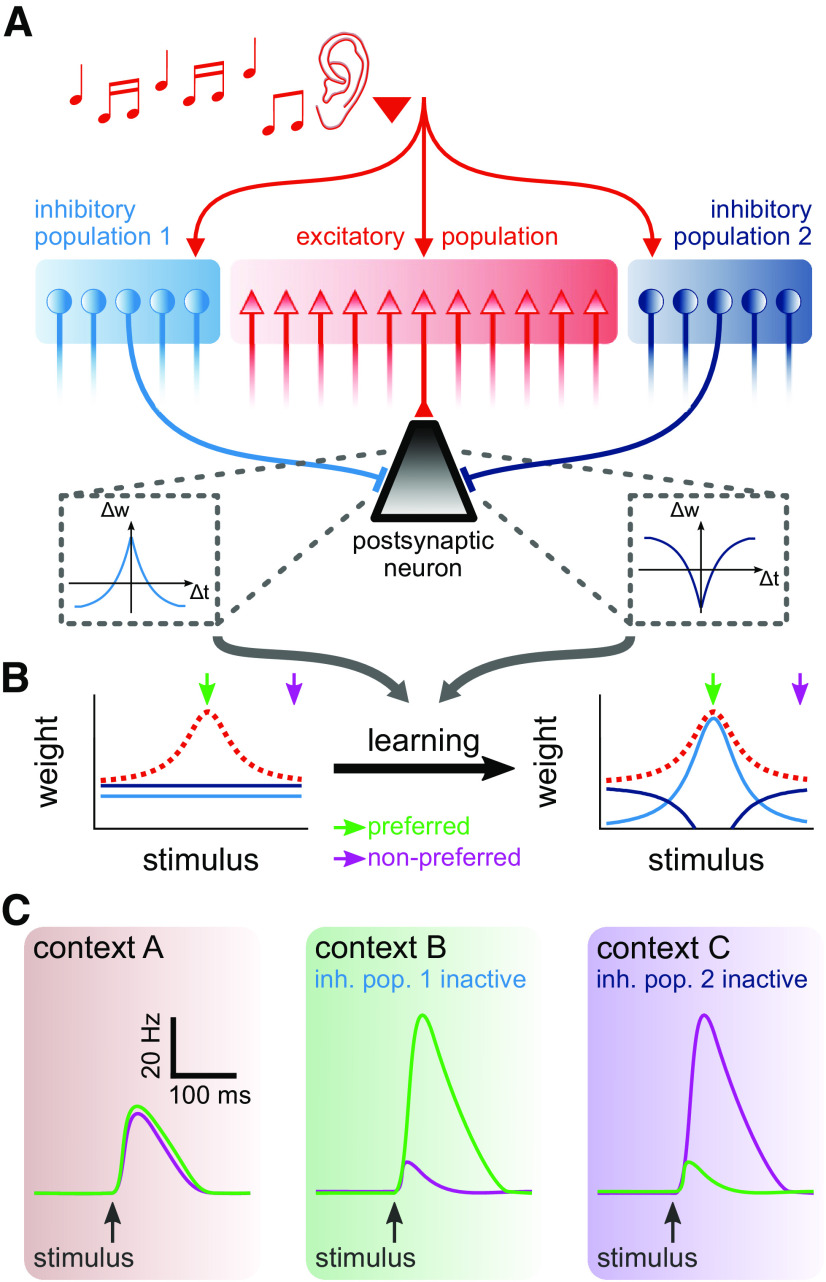Figure 1.
Learning of two distinct inhibitory populations and postsynaptic response because of attentional switch between contexts. A, Schematic of co-active plasticity rules. A postsynaptic neuron (black triangle) receives tuned excitatory input (red population) and inhibition from two distinct populations (blue populations). The two inhibitory populations follow different synaptic plasticity rules. Δw indicates change in synaptic weight, and Δt indicates interval between presynaptic and postsynaptic spikes. B, Initially untuned inhibitory weights (blue lines) acquire different synaptic weight profiles after learning that depend on the excitatory weight profile (red dashed line). C, Contextual changes (e.g., because of attention), which we hypothesize to be responsible for modulating the activity of inhibitory populations, result in different postsynaptic responses to the same stimulus (Bathellier et al., 2012; Ruff and Cohen, 2014, 2019; Benjamin et al., 2019; Billeh et al., 2019; McClure and Polack, 2019), such that preferred (green) and nonpreferred (purple) stimuli elicit postsynaptic responses with different amplitudes.

